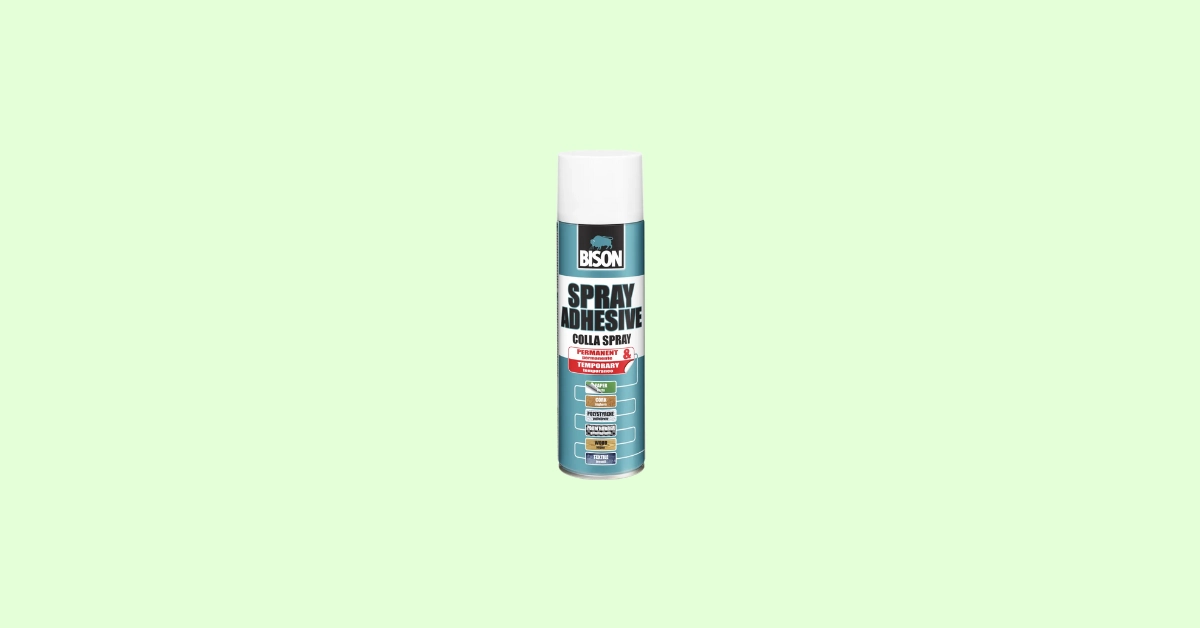There are plenty of glues out there that can replace spray adhesives, but only some adhesives will work for some projects. Sure, spray glues are popular because they’re quick and easy to use, but sometimes, other options can give you better results depending on your work.
For example, some adhesives are perfect for delicate tasks like paper crafts, while others are built to handle the heavy lifting required in construction or large-scale DIY projects. If you’re wondering what to use instead of spray adhesive, I have listed adhesives you can use. Let’s read more:
What Can I Use Instead of Spray Adhesive?
Glue Sticks for Paper Crafts
Glue sticks can be used as an alternative to spray adhesive. However, they are not recommended for heavy-duty or high-stress tasks.
Glue sticks are a go-to for many paper crafting projects, like scrapbooking, card making, or putting together photo albums.
They’re easy to use and way less messy than liquid glue. Plus, they dry quickly and don’t warp or soak through your paper, which is a huge bonus.
One advantage of glue sticks is that they are non-toxic and perfect for casual crafting.
Mod Podge for Decoupage and Sealing
If you don’t want to use spray adhesive, you can opt for Mod Podge for decoupage and sealing. It works as a sealer and finish, Making it perfect for projects like decoupage, scrapbooking, and more.
One disadvantage is that it takes longer to dry than other glues and is not the best choice for non-porous materials.
Mod Podge has a formula for you whether you want a matte, glossy, or satin look. It bonds materials like paper, fabric, and wood, leaving a clear, flexible finish.
Double-Sided Tape for Quick Bonding
I recommend double-sided tape for quick, light, and mess-free bonding. It’s perfect for bonding paper, photos, and other lightweight materials. Double-sided tape is also a go-to for card-making, scrapbooking, or mounting pictures.
It’s not ideal for heavier or more flexible materials, so if your project needs extra strength, you might want to look at other options. There’s no drying time, just peel and stick, and you’re good to go.
Rubber Cement for Paper and Photos
Rubber cement is a classic for bonding paper, photos, and even light fabrics. It dries quickly and clearly and doesn’t warp or wrinkle your materials, which is a massive win for scrapbooking and card-making.
Another cool thing is that it’s flexible and repositionable, so if you need to tweak something, you can.
Remember that the bond can weaken over time; while water-resistant, it’s not the strongest adhesive. Also, it can be a bit tricky to remove once it’s thoroughly dried. Still, if you need something for flexible and temporary projects, rubber cement is a solid choice!
Hot Glue Guns for Heavy Materials
Hot glue guns are total game-changers for crafting and DIY projects. They work with glue sticks to create solid and durable bonds on almost anything: wood, plastic, fabric, metal, and even ceramics.
The glue sets super fast, which is perfect when you’re working on quick or heavy-duty projects. It’s also excellent for sticking oversized items or heavier materials together. Sometimes, things can get a little messy, and since the glue is scorching, you’ll want to be careful to avoid burns.
Also, remember that hot glue doesn’t hold up well in extreme temperatures, so it’s not the best for outdoor projects.
PVA (White) Glue for Paper and Wood
PVA glue is a reliable favorite for many projects. It’s water-based, dries clear, and is flexible once set, making it perfect for bookbinding, woodwork, and crafts. It’s also super easy to clean up with water, which is always a plus.
White glue works well on porous surfaces like paper, wood, and fabric, giving you a strong, permanent bond. It’s not great for non-porous materials like metal or plastic and takes time to cure fully. So, if you need something instant, this might not be your best bet. But for everything else, PVA glue is a solid choice!
Construction Adhesive for Heavy-Duty Projects
Construction adhesives bond extensive, heavy materials like wood, concrete, masonry, and drywall. They are built for strength and durability.
You’ll usually apply them with a caulk gun. They come in different formulations, some with added flexibility to prevent cracking.
Remember that depending on the product, they often need time to cure, ranging from a few hours to several days. They’re unique for heavy-duty jobs but probably not the best choice if you’re in a hurry or working on smaller, quick projects.
Fabric Glue for Upholstery and Textiles
Fabric glue is a lifesaver for anyone working with textiles! It’s designed to bond fabric without the hassle of sewing, making it perfect for hemming, quick repairs, or adding embellishments to clothes, upholstery, and other fabric projects.
Once it dries, it stays flexible and is even washable, so it’s great for items you’ll wear or clean. While it’s not as strong as stitching in high-stress areas, it’s a fantastic alternative for DIY projects and quick fixes. Some fabric glues create a permanent bond, while others give you time to reposition before setting.
Super Glue (Cyanoacrylate) for Quick Fixes
Super glue, or cyanoacrylate, is fast-drying and creates a solid bond on non-porous materials like plastic, metal, ceramics, and glass. It is a fantastic option if you need to make a minor repair or work on something that requires precision.
Just a heads-up, though: it’s not the best for larger projects or anything that needs flexibility. And be careful when using it; it bonds skin just as quickly as your project! A little goes a long way, so use it sparingly for the best results.
Editors Opinion
Depending on your project, I think it’s worth considering alternatives to spray adhesive. While spray adhesives are quick and convenient, they can be messy and may not provide the strong, lasting bond needed for specific materials.
For more precision, glue sticks work great for paper crafts, while fabric glue is perfect for projects without sewing. For heavier materials, construction adhesive or hot glue are better options.


